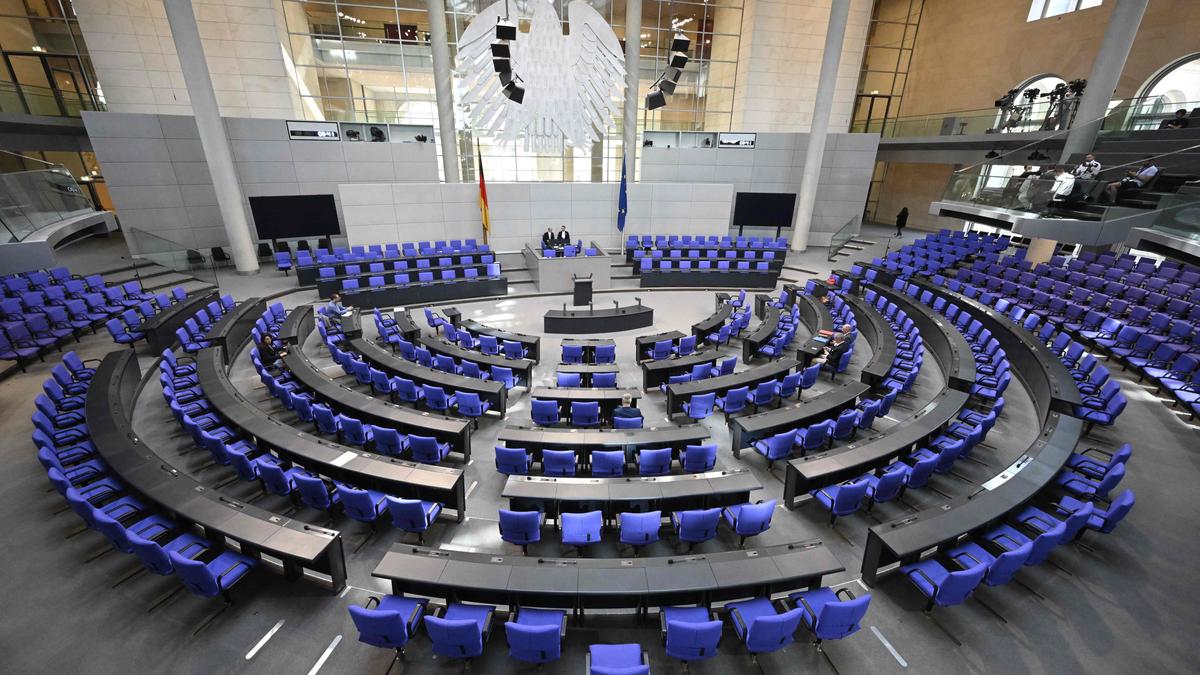The story so far: On July 30, Germany’s federal constitutional court upheld the government’s move to downsize the lower house of parliament, with effect from the 2025 federal elections. The present 20th Bundestag (German Parliament) is its largest ever, since the first post-war legislature was inaugurated in 1949, with a total of 736 deputies. The current tally positions the Bundestag as the largest Parliament among democratically elected assemblies, even bigger than the 720-strong parliament of the European Union. The steady rise in the number of representatives has raised concerns on the strain imposed on the public coffers, as well as implications for the functional efficiency of the Bundestag.

What is the background?
The context to the July judgment is the constant enlargement of the Bundestag, a consequence of Germany’s complex electoral architecture as well as the fragmentation of the party system in recent years.
Since the country’s second quadrennial federal elections of 1953, each voter has exercised two votes, in what is known as the personalised proportional or mixed-member proportional representation system. The first vote is cast to directly choose a candidate from a local constituency via the conventional first-past-the-post method of obtaining a simple majority for a total of 299 seats. Voters simultaneously cast a second ballot to choose a political party for another 299 parliamentary seats, which are distributed across Germany’s 16 regions. A party must have secured either 5% of the second vote share or a minimum of three individual constituencies to qualify for entry into parliament. The 5% threshold was stipulated to prevent too many splinter parties from entering the Bundestag. It is the second, that is, the state list vote that determines the relative strength of parties in the Bundestag, because the allocation of seats is proportionate to the number of second votes each party has received.
The conversion of the second votes into seats involves a two-stage process. Each region receives seats in proportion to the population resident therein. These are then distributed among the parties based on their respective share of second votes. The seats for each party at the federal level is subsequently fixed as per the number of candidate seats it won in the state, as well as the number of seats it was entitled to, based on the share of the second vote it received. The higher of the above two figures is the final tally of the party’s seats in a region. The cumulative addition of seats across the regions makes up the party’s strength in the Bundestag.
Also read: The far-right swing in European Parliament elections | Explained
Why have legislators increased?
Germany’s two largest parties, the ruling Centre-left Social Democrats (SPD) and the opposition Centre-right Christian Democratic Union (CDU), have over the decades garnered the maximum number of directly elected seats. These first vote seats are invariably greater than the seats that they would be entitled to on the basis of their share of the second votes and as such are known as extra seats or overhang seats. However, in view of Germany’s personalised proportional system, parties have been allowed to retain these overhang seats. Crucially, even though the support base of the larger parties has eroded in recent years consequent to the emergence of smaller parties, they have managed to retain their dominance of first vote seats.
In a 2008 decision, the constitutional court ruled the rising numbers of overhang seats as violative of the equality of elections and hence unconstitutional. In 2012, the constitutional court addressed this imbalance by ruling that the large number of extra or overhang seats that accrued to the larger parties must be compensated through the creation of “balance seats” for smaller parties. This would be in accordance with the principle of equal suffrage, direct elections and equal opportunities for political parties. The verdict therefore inevitably resulted in a further addition to the number of legislators. The Court has since upheld amendments to the election law that broadly reflect its 2012 judgment.
What move did the govt. propose?
On March 17, 2023, the government enacted legislation which would cap the size of the Bundestag at 630 representatives with effect from the 2025 federal elections. Whereas the number of candidate seats will remain at 299, the party list will increase to 331 seats. The new limit was decided under the guidance of an Electoral Rights Commission in 2022 and would be achieved by scrapping both the “overhang seats” and “balance seats”. Crucially, the weightage hitherto attached to candidate seats would be reduced. Obtaining a simple majority in an individual constituency will not henceforth automatically translate into a parliamentary seat. Where parties win more candidate seats than their second vote share entitles them to, individual winners who poll the lowest share of the vote will not be awarded a seat. This has now been upheld by the federal constitutional court.
However, the government has faced strong criticism that the new measure was not backed by a wide consultative process ahead of its passage. The main opposition CDU has already said that it would roll back the law when it regained office.
The writer is Director, Strategic Initiatives, AgnoShin Technologies.








































